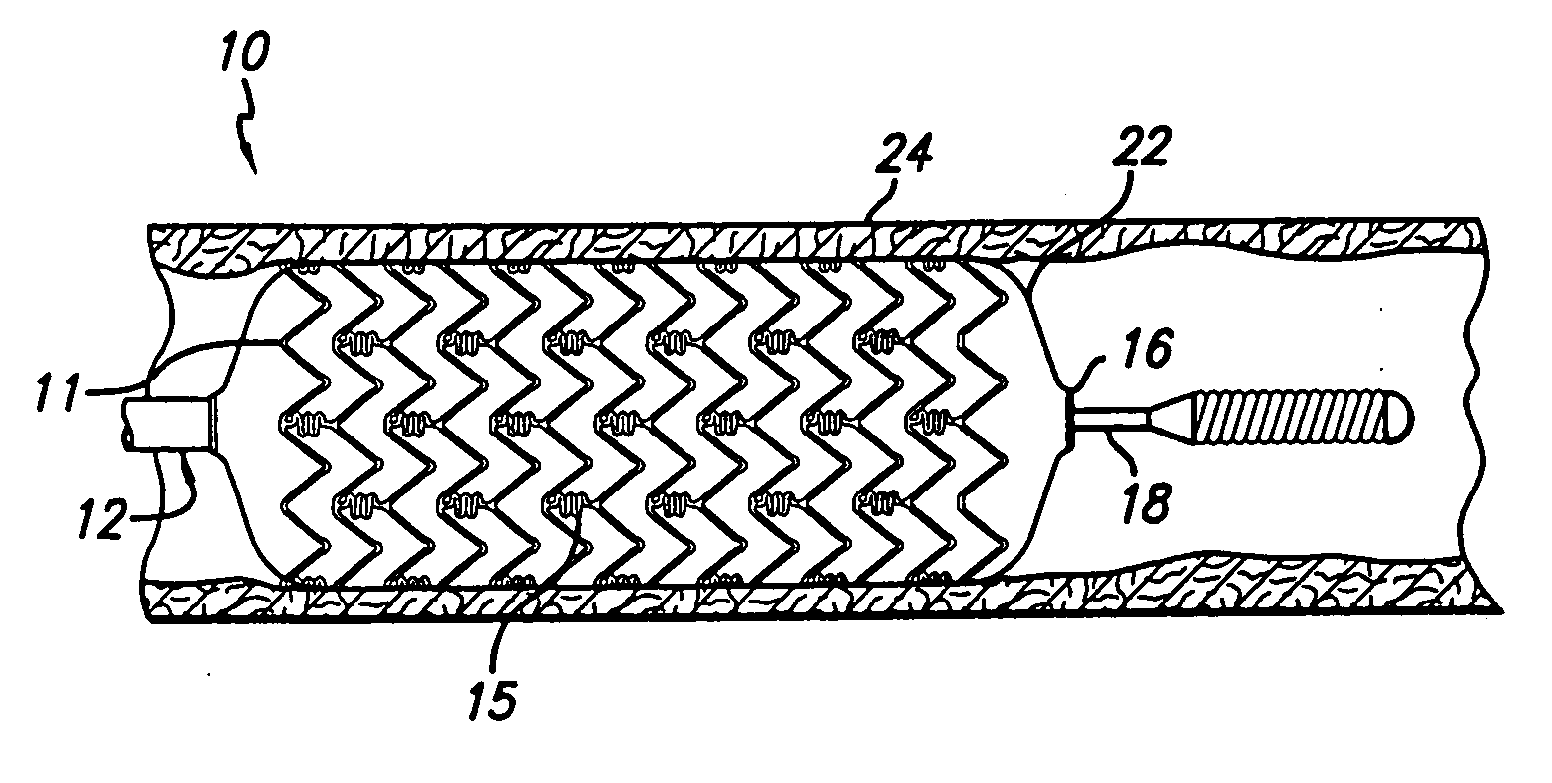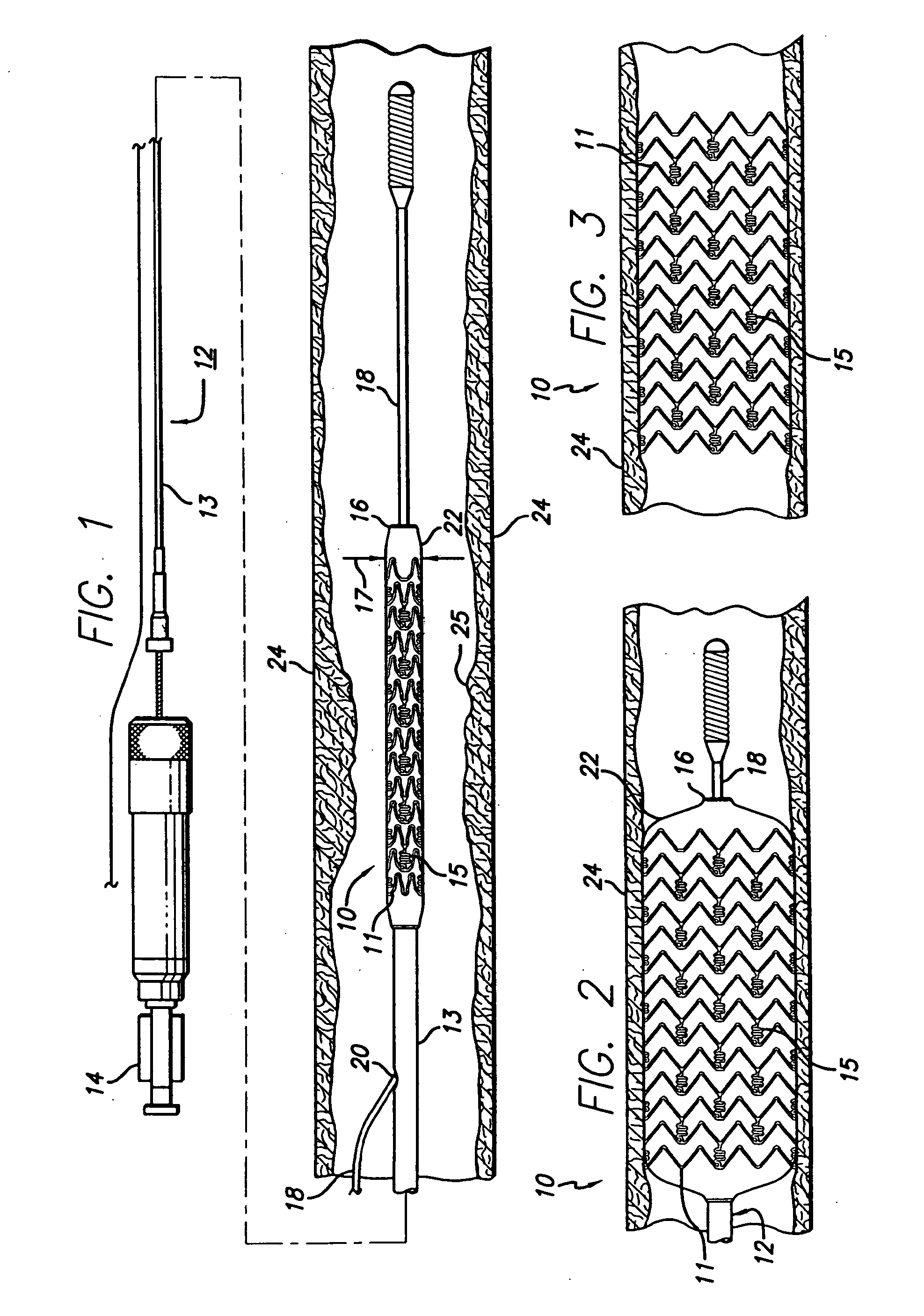Treatment Of Diabetic Patients With A Drug Eluting Stent And Adjunctive Therapy
a stent and drug-eluting technology, applied in the field of diabetic patients' vascular disease treatment, can solve the problems of undoing much of what was done, prolonging recovery period, and bypass surgery still involves potentially serious complications, so as to improve the responsiveness of the artery to insulin, reduce inflammation, and reduce the amount of activity.
- Summary
- Abstract
- Description
- Claims
- Application Information
AI Technical Summary
Benefits of technology
Problems solved by technology
Method used
Image
Examples
Embodiment Construction
[0055]Use of the term “herein” encompasses the specification, the abstract, and the claims of the present application.
[0056]Use of the singular herein includes the plural and vice versa unless expressly stated to be otherwise, or obvious from the context that such is not intended. That is, “a” and “the” refer to one or more of whatever the word modifies. For example, “a drug” includes one drug, two drugs, etc. Likewise, “the polymer” may refer to one, two or more polymers, and “the stent” may mean one stent or a plurality of stents. By the same token, words such as, without limitation, “polymers” and “stents” would refer to one polymer or stent as well as to a plurality of polymers or stents unless, again, it is expressly stated or obvious from the context that such is not intended.
[0057]As used herein, unless specifically defined otherwise, any words of approximation such as without limitation, “about,”“essentially,”“substantially,” and the like mean that the element so modified ne...
PUM
| Property | Measurement | Unit |
|---|---|---|
| time | aaaaa | aaaaa |
| time | aaaaa | aaaaa |
| time | aaaaa | aaaaa |
Abstract
Description
Claims
Application Information
 Login to View More
Login to View More - R&D
- Intellectual Property
- Life Sciences
- Materials
- Tech Scout
- Unparalleled Data Quality
- Higher Quality Content
- 60% Fewer Hallucinations
Browse by: Latest US Patents, China's latest patents, Technical Efficacy Thesaurus, Application Domain, Technology Topic, Popular Technical Reports.
© 2025 PatSnap. All rights reserved.Legal|Privacy policy|Modern Slavery Act Transparency Statement|Sitemap|About US| Contact US: help@patsnap.com


